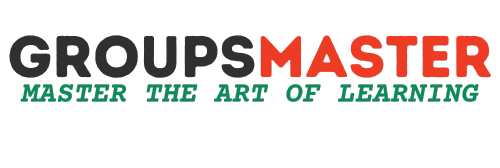There are better practices to “best practices”
In various fields, the concept of “best practices” has long been regarded as a benchmark for success and efficiency. Organizations and individuals often seek out these established methods, hoping to replicate the achievements of others. However, the notion of “best practices” can be limiting, as it implies a fixed standard that may hinder innovation and adaptation.
While “best practices” can provide valuable insights and guidelines, they are not without their limitations. Relying solely on established practices can hinder innovation, as it discourages exploring new possibilities and creative solutions. Furthermore, what may be considered a “best practice” in one context may not necessarily yield the same results in another. Every organization, industry, or situation has unique dynamics, challenges, and objectives that require tailored approaches. Moreover, the term “best practices” suggests a static and fixed mindset, implying that once a certain method is identified as the best, there is no room for improvement. This mindset can stifle progress and prevent individuals and organizations from seeking novel ways to tackle emerging challenges.
Rather than adhering rigidly to “best practices,” organizations and individuals can benefit from embracing the philosophy of continuous improvement. Continuous improvement recognizes that change is inevitable and encourages a proactive approach to adapt and refine practices over time. Continuous improvement involves fostering a culture of learning, where experimentation, feedback, and reflection are valued. It emphasizes the importance of ongoing evaluation and iteration, enabling individuals and organizations to evolve and stay ahead of the curve. By regularly assessing and adjusting processes, practices, and strategies, continuous improvement allows for innovation, optimization, and adaptation to changing circumstances.
To move beyond “best practices,” it is crucial to create an environment that encourages experimentation and risk-taking. Embracing a mindset that sees failures as learning opportunities promotes a culture of innovation and resilience. By providing individuals with the freedom to explore and test new ideas, organizations can uncover better practices that are specifically tailored to their unique contexts. Encouraging experimentation also involves fostering open communication and collaboration. When diverse perspectives are valued and teams are empowered to share their insights, innovative ideas emerge. By creating platforms for knowledge sharing, such as cross-functional teams, brainstorming sessions, and open forums, organizations can tap into the collective wisdom of their workforce, leading to the discovery of better practices. Feedback and reflection are integral components of continuous improvement. Actively seeking feedback from customers, stakeholders, and team members provides valuable insights into the effectiveness of practices and processes. This feedback can highlight areas for improvement and uncover new opportunities for growth.
Reflection, both at an individual and organizational level, allows for critical analysis and the identification of areas that require adjustment or innovation. By fostering a culture of reflection, individuals and organizations can continuously learn from experiences, successes, and setbacks, leading to the development of better practices. In a rapidly changing world, flexibility and adaptability are essential attributes for organizations and individuals seeking better practices. Recognizing that contexts, technologies, and needs evolve over time, being open to change becomes paramount. Rather than rigidly adhering to established practices, a flexible mindset allows for agility and the ability to respond to emerging challenges and opportunities. Flexibility and adaptability can be cultivated by embracing emerging technologies, staying informed about industry trends, and remaining open to new ideas and perspectives. Organizations that prioritize agility and adaptability are better equipped to identify and integrate practices that yield superior results.
While “best practices” have their place in providing initial guidance, there are better approaches to continuous improvement and growth. By moving beyond the confines of “best practices” and embracing the principles of continuous improvement, experimentation, and adaptability, organizations and individuals can unlock their potential for innovation and success. In a dynamic and evolving world, the pursuit of “better practices” requires a mindset that values flexibility, adaptability, and a commitment to lifelong learning. By embracing continuous improvement, organizations and individuals can break free from the constraints of “best practices” and embark on a journey of exploration, innovation, and sustainable growth.



